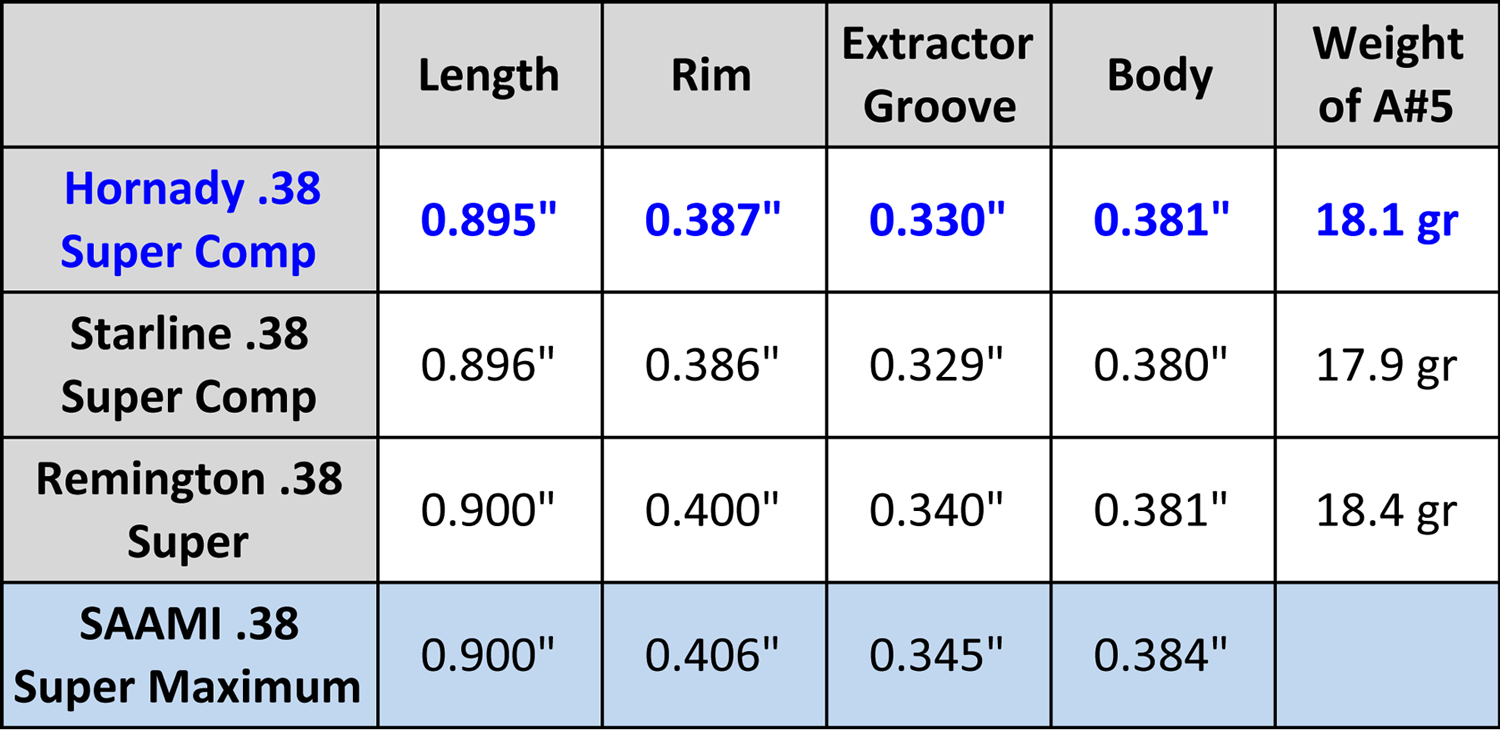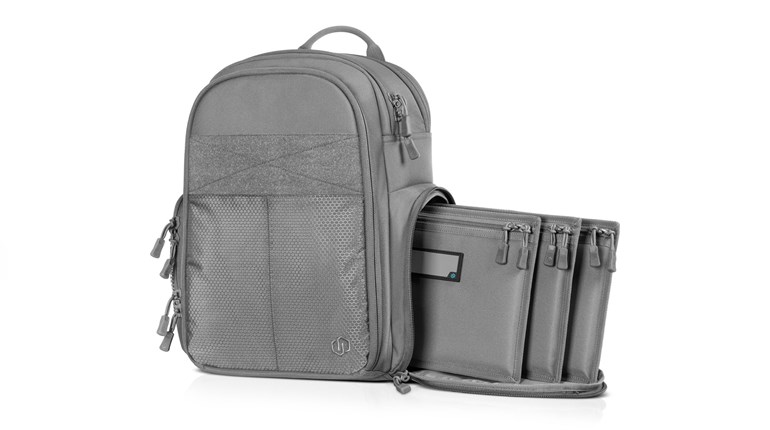
Hornady just released a new brass case for .38 Super shooters, this one a rimless .38 Super Comp. Rimless cases are the best design for semi-automatic pistols, and one flaw of the .38 Super is its semi-rim.

The .38 Super is actually the .38 Automatic with a different name. (To be correct, the Super’s name is .38 Super Automatic +P.) The .38 Automatic was created in 1900 by John Browning for his new semi-automatic pistol produced by Colt. Mr. Browning designed the case with a semi-rim, intended to be used for headspacing the cartridge. It might have seemed like a good idea at the time, but the semi-rim was unnecessary and would prove to be less than ideal over time.
When cartridges are stacked in the magazine, the rim of the upper round is positioned in the extractor groove of the underlying round. With the semi-rimmed .38 Super, the rim protrudes farther into the extractor groove than rimless cases like the .45 Auto. The semi-rim greatly increases the amount of force required to strip the top round from the magazine. It actually requires that the underlying rounds be pushed down slightly so the top round can slide forward. The semi-rim also encourages nosedive. A rimless case offers smoother, easier feeding and higher feed angles because of less nosedive.
This is not Hornady’s first rimless .38 Super case. They used to manufacture the rimless .38 TJ (Todd Jarrett) cases which also had a special extractor groove geometry. Hornady does not make the .38 TJ cases at present, though Starline does.
The .38 Super Comp has been around a while and is produced by Starline. The Starline Super Comp case is not truly rimless, and sports a mini-rim. The rim measures 0.386-inch while the case body is 0.380-inch. It’s small, but it’s there. Hornady has duplicated this mini-rim in their design. The extractor groove geometry of the Hornady Super Comp and Starline cases look the same.

Case capacity of the new Hornady case was measured and compared to Starline cases. I used the fine grained Accurate #5 powder for this comparison. It has a bulk density of 0.990 grams per cubic centimeter, which is nearly the same as water (water = 1.0 gram / cc). The Hornady case has slightly more capacity than the Starline, holding 0.2-grains more powder.
Case wall thickness at various depths will determine what weight/length of bullets can be used without excessive bulging that would prevent the round from fitting in the chamber. The Hornady brass will accept heavy bullets at nominal overall lengths. I was able to seat 160-grain cast round nose bullets to 1.265-inch and a 170-grain Sierra FMJ .357 bullet to 1.280-inch without excess bulging of the case wall. I did see a measurable bulge when seating a 180-grain Nosler .357 JFP bullet at 1.245-inch. It still fit in my chamber, but it had a 0.002-inch bulge at the base of the bullet.

The rimless .38 Super Comp is a distinct improvement over the semi-rimmed design, and Hornady’s high quality cases will be welcomed by .38 Super shooters everywhere. The suggested retail price is $80.35 per 200. A quick Google search located the new Hornady brass at MidwayUSA, Grafs and Midsouth Shooters Supply at discounted prices.
All figures by the author.

































